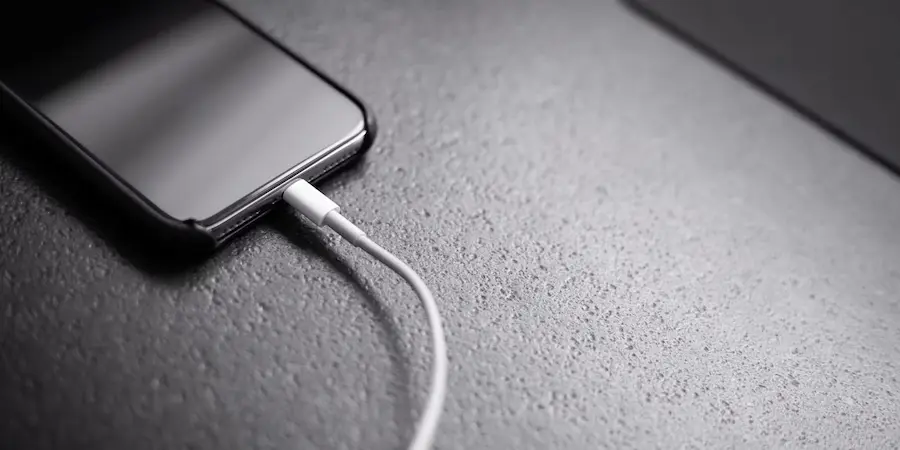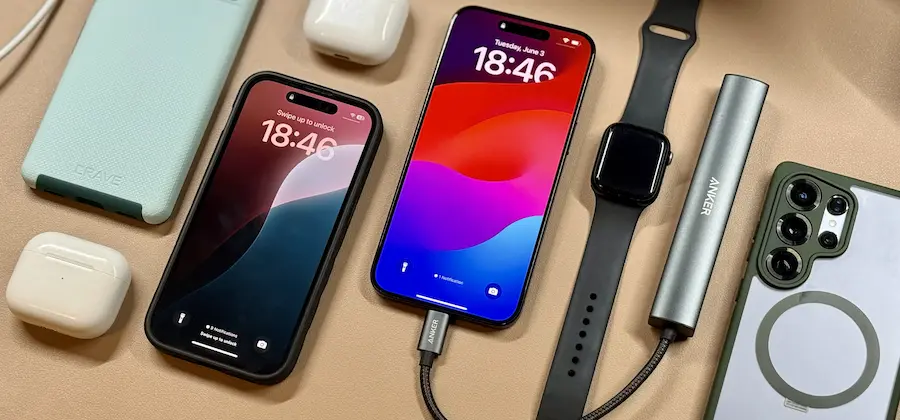Does your iPhone or iPad only charge when it wants to, does the cable sit oddly or disconnect with the slightest movement? Don’t worry: in many cases the charger isn’t to blame, but lint and dust accumulated in the Lightning or USB-C port. The good news is you can bring charging back to life with a simple, safe cleaning using things you probably already have at home.
Apple switched to USB-C with the iPhone 16; in fact it is one of the differences between previous models and the new iPhone 17, but the cleaning method is the same as for the Lightning ports of earlier models; the important thing is to act gently and precisely, like when you blow dust from a mechanical keyboard so it types crisply again.
Before you start: identify the problem
First, turn the iPhone or iPad completely off. On recent models, press and hold the side button together with the volume up or down button until you see the power-off slider and drag it; on older models, just press and hold the top or side button. Take the opportunity to remove the case and, if you feel like it, give the case and the speakers a quick check.
With a direct light (the phone flashlight works), inspect the inside of the port. If you see a layer of grime stuck to the walls or compacted lint, it’s very likely blocking good contact between the connector and the port pins. This diagnosis is key because, although the problem may look like a cable fault, many times it’s just a classic dust plug rather than a USB-A connector.
Get to work: safe cleaning step by step
Start with the least invasive: compressed air. With the can perfectly vertical, apply short, light bursts toward the port. Avoid long sprays and don’t tilt the can, as you could expel extremely cold liquid refrigerant and damage the connector. Re-illuminate the interior: if you no longer see debris, let it dry for 2 or 3 minutes before continuing and, above all, before turning on or charging.

If residue remains, use a wooden toothpick. With very gentle movements, drag out the accumulated lint and detach dirt stuck to the walls. Remember there are tiny pins inside: no metal tools or excessive pressure. If you need a bit more stiffness, a plastic pick or dental floss with a plastic handle also work. Extra trick: you can wrap the tip of the toothpick with a little cotton to cushion it and better trap the dust.
Do you notice a sticky substance or stains that don’t come off dry? Slightly dampen a cotton swab with rubbing alcohol (isopropyl) and wipe the inner edges of the port with circular motions. It should not drip; the goal is for it to be only damp. If the residue is very deep, remove some cotton from the swab, wrap it around the tip of the toothpick, moisten it and repeat the process to reach further. When you’re done, let it dry again for 2 to 3 minutes; if you want to speed it up, you can blow gently toward the port, but without obsessing.
Check, prevent, and when to contact Apple
With the port clean and dry, turn the device on and try charging. If the problem was dirt, you’ll notice the cable fits better and the charging is stable. Still failing or cutting out intermittently? Before worrying, try another cable and another power source, because sometimes the accessory is to blame and not the phone or tablet.
To keep it from happening again, avoid carrying the iPhone or iPad loose in pockets or bags, where lint works its dark magic; better in a case and, if you move around a lot, consider a rubber dust plug for the port, which acts as a physical barrier and even lets you hang a charm if you like a personal touch. It’s a prevention as simple as adding heatsinks to a Raspberry Pi: little effort, big results.
If after cleaning the port and changing cable/power brick the problem persists, it’s sensible to contact Apple support for a professional inspection, as there could be damage to the connector or the board. You can start the process from the official support page. In fact, a timely intervention prevents bigger issues and ensures everything is fixed as it should be.
In summary: power off, inspect, compressed air, toothpick if needed and a touch of isopropyl alcohol for the most stubborn spots, always with patience and a light hand. With these steps, most intermittent charging problems caused by dirt disappear, and you’ll have a port ready for many more battles.

